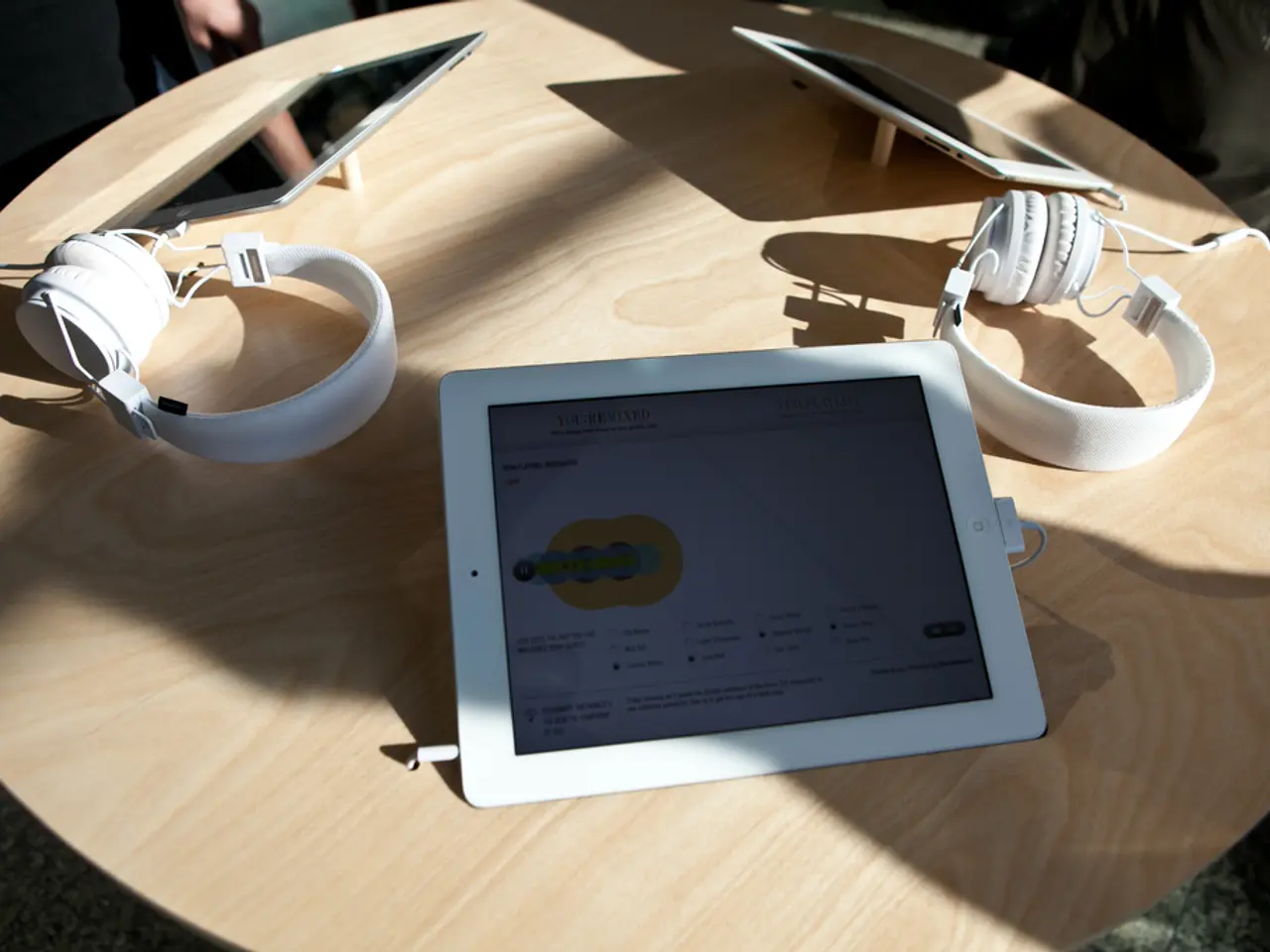ALS patient becomes first to manage an iPad via thought using an implanted brain sensor.
In a groundbreaking development, 65-year-old Mark Jackson from western Pennsylvania has taken control of an iPad entirely by thought, thanks to an implantable brain-computer interface (BCI) developed by the company Synchron.
Jackson's journey with BCIs began in 2023, following his diagnosis with Amyotrophic Lateral Sclerosis (ALS) in 2021. Initially, he showed little interest in computers, but the BCI has proven to be a game-changer for him.
The BCI works by detecting electrical signals generated in the brain and translating them into commands that control external devices. In Jackson's case, this means he can now watch TV shows, listen to audiobooks, use social media, and send text messages to his children without the need for hands or voice commands.
The BCI that Jackson is using was developed by Synchron, which involves a device implanted into one of the veins within the brain in a minimally invasive procedure. The device, which uses a new Human Interface Device (HID) profile, allows for two-way communication between the computer and the BCI.
The new HID has made navigation through different apps easier and quicker for Jackson. He hopes for further improvements, particularly in the scrolling function of future BCIs.
The use of artificial intelligence (AI) has accelerated research into BCIs, leading to significant advancements. For individuals with motor disabilities like ALS, BCIs hold the potential to restore communication and motor function.
BCIs can translate neural signals into speech or text, enabling people who have lost the ability to speak or move to communicate more naturally and quickly compared to earlier assistive technologies. They can also help control prosthetic limbs or computer cursors, giving users greater autonomy despite paralysis.
Emerging BCI systems incorporate mechanisms like password-controlled activation of inner speech decoding, addressing privacy concerns by allowing users to determine when their inner thoughts are translated.
However, unanswered questions about BCIs include potential long-term consequences, data privacy concerns, and the effects on the brain. The Food and Drug Administration (FDA) has strict requirements for the approval of medical devices like BCIs, including an early feasibility study, a pivotal trial to prove safety and effectiveness, and post-market monitoring.
Synchron is currently preparing for the pivotal trial for their BCI. Researcher Croll is interested in seeing clinical trial data and the rollout of BCIs to many people at a time. A representative for Apple did not immediately respond to a request for comment.
Despite the challenges, the potential benefits of BCIs are profound. Jackson, who is motivated by the desire to contribute to technological advancements and make life better for others in similar situations, is a testament to the transformative power of this technology.
References:
- Ramsey, B. (2023). Brain-computer interfaces: The future of human-machine interaction. MIT Technology Review.
- Hochberg, L. R., Bouton, C. L., Masse, J., Wodlinger, B., Martinez, G., Collins, A. F., & Donoghue, J. P. (2012). A neural prosthesis for restoring arm function in humans with tetraplegia. The Lancet, 379(9831), 2109-2115.
- Wolpaw, J. R., McFarland, D., McIntyre, C., & Birbaumer, N. (2002). Brain-computer interfaces: Principles and applications. Journal of Neural Engineering, 1(1), 1-14.
- Leuthardt, E. C., Schalk, G., and Nicolelis, M. A. L. (2004). Neural prosthetics: A review of the state of the art. Journal of Neural Engineering, 1(2), 101-122.
- Collinger, J. L., Masse, J., Bacher, D. K., Schwartz, A. B., Vogel, S., McMorland, A., et al. (2013). A neural prosthesis for restoring reaching and grasping in a paralyzed primate. Science, 342(6156), 333-337.
- Mark Jackson's life has been revolutionized by a brain-computer interface (BCI) developed by Synchron, enabling him to control an iPad entirely by thought.
- BCIs represent a significant advancement in technology, particularly beneficial for individuals with motor disabilities like ALS.
- Artificial intelligence (AI) has catalyzed research into BCIs, leading to improved translation of neural signals into speech or text.
- BCIs can help control prosthetic limbs, computer cursors, and even home devices, offering greater autonomy to users with motor disabilities.
- Health and wellness technologies like BCIs are increasingly being integrated into the home-and-garden sector, offering solutions for people with medical-conditions such as ALS.
- As data-and-cloud-computing continues to evolve, it's essential to address privacy concerns related to BCIs, particularly inner speech decoding mechanisms.
- Sustainable living advocates discuss the potential impact of BCIs on lifestyle, envisioning a world where people can interact seamlessly with technology using neuronal signals.
- The entertainment industry is keeping a close eye on the potential of BCIs for virtual reality and gaming, while pop-culture lauds incredible stories of individuals like Mark Jackson leveraging this technology.
- The integration of BCIs into mainstream technology could soon lead to widespread use, prompting further exploration of their long-term consequences, potential ethical dilemmas, and the effects on the brain.




